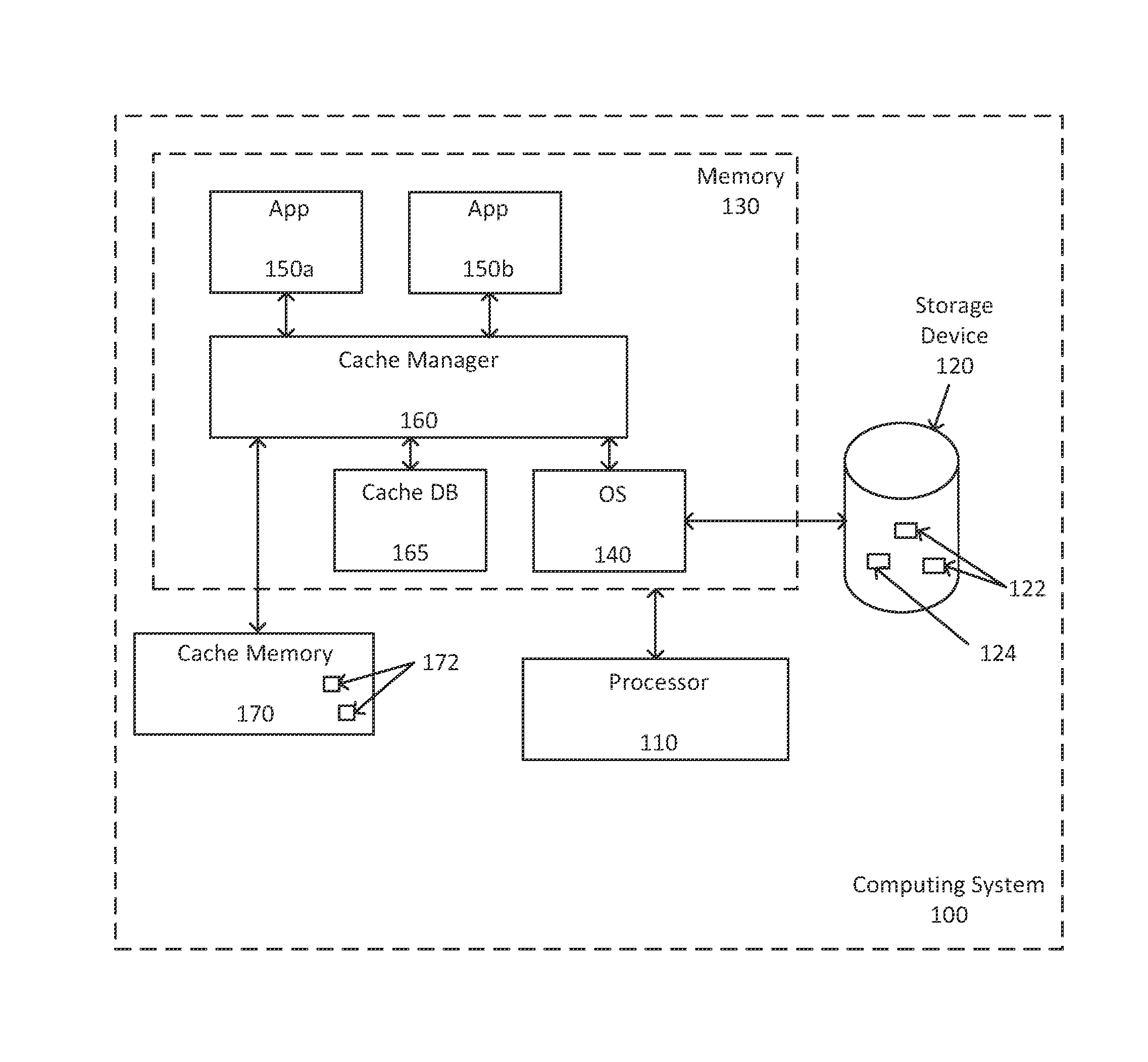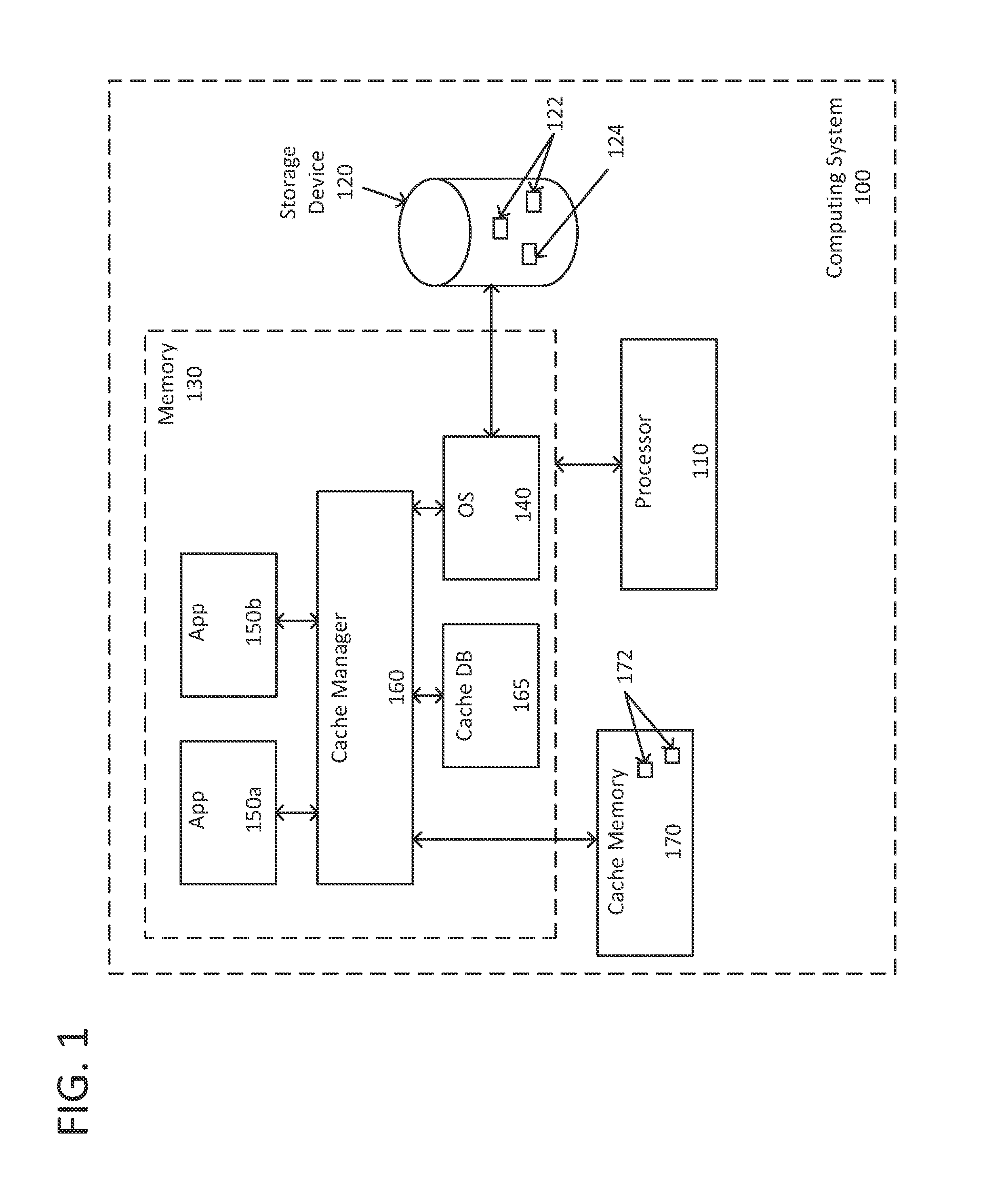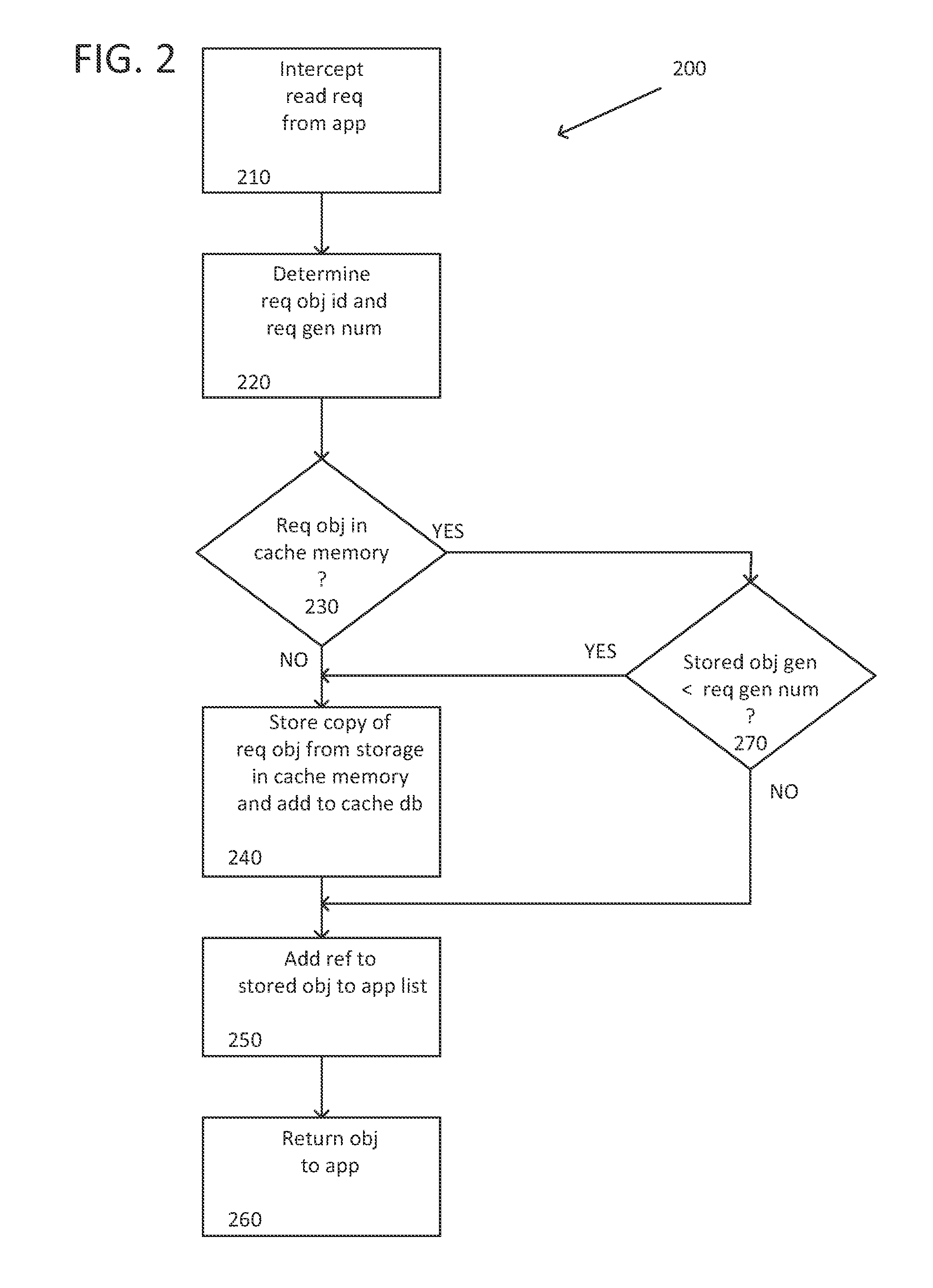System and Method for Maintaining Cache Coherency
a cache and coherency technology, applied in computing, memory adressing/allocation/relocation, instruments, etc., can solve the problems of identifying that an object in the cache is stale, cannot be used, and cannot be valid and used,
- Summary
- Abstract
- Description
- Claims
- Application Information
AI Technical Summary
Benefits of technology
Problems solved by technology
Method used
Image
Examples
Embodiment Construction
[0031]Presented herein are various embodiments of a system and method for maintaining cache coherency in a computing system.
[0032]As is known in the art, a cache manager improves the performance of applications running on a computing system by storing copies of file objects from a storage device in a cache memory so that subsequent uses of the same object are fulfilled from the faster cache memory rather than requiring that the object be fetched once more from the storage device.
[0033]In the present approach, the cache manager tracks the files an application uses and caches the objects the application reads from those files, so that it can determine if those cached objects can be used again, both as the application continues to run, and later when the application runs again.
[0034]In the present approach and as explained further elsewhere herein, the cache manager maintains objects in a cache memory on an application-by-application basis, associating with each application the files t...
PUM
 Login to View More
Login to View More Abstract
Description
Claims
Application Information
 Login to View More
Login to View More - R&D
- Intellectual Property
- Life Sciences
- Materials
- Tech Scout
- Unparalleled Data Quality
- Higher Quality Content
- 60% Fewer Hallucinations
Browse by: Latest US Patents, China's latest patents, Technical Efficacy Thesaurus, Application Domain, Technology Topic, Popular Technical Reports.
© 2025 PatSnap. All rights reserved.Legal|Privacy policy|Modern Slavery Act Transparency Statement|Sitemap|About US| Contact US: help@patsnap.com



